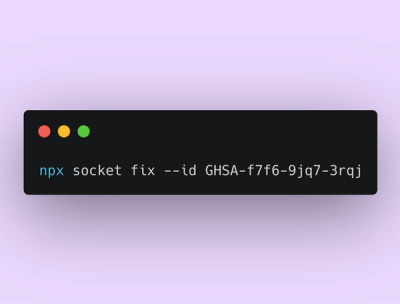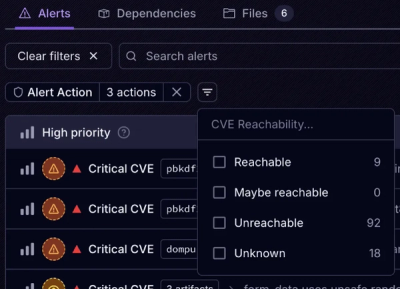
Product
Announcing Socket Fix 2.0
Socket Fix 2.0 brings targeted CVE remediation, smarter upgrade planning, and broader ecosystem support to help developers get to zero alerts.
notify-run can be installed with pip::
pip install notify-run
This will install both a Python module notify_run for sending notifications
programmatically, and the notify-run command for sending notifications
from the shell.
Before you use either the shell command or Python package to send notifications,
you must configure an endpoint. Both the command-line interface and Python
interface provide a way of creating this configuration, and the configuration is
shared by both. The configuration is stored in a file called .config/notify-run
in your home directory.
Register a channel
To register a channel::
notify-run register
You will then be presented with a link that you can open on the devices
you wish to subscribe to the channel. A QR code encoding the link is also
provided for convinience.
.. image:: https://raw.githubusercontent.com/notify-run/notify.run/master/py_client/screenshots/register.png
:width: 490px
:height: 453px
:alt: Registering from the command line.
Sending Message
~~~~~~~~~~~~~~~
Once you have registered a channel, you can send a message to it with the
``send`` subcommand::
notify-run send "Hi from notify-run."
To open a webpage when the notification is clicked, you can pass it to
notify-run as the `-a` parameter::
notify-run send "Click to open notify.run!" -a https://notify.run
Using an Existing Endpoint
If you want to point notify-run at an existing endpoint, for example one
created through the web interface <https://notify.run/>_, you can use the
configure subcommand instead of register::
notify-run configure <endpoint URL>
The commands above can also be used through a Python interface::
from notify_run import Notify
notify = Notify()
notify.register()
notify.send('Hi there!')
notify.send('Click to open notify.run!', 'https://notify.run')
To connect to a channel you have already created, pass it as the endpoint parameter to Notify():
notify = Notify(endpoint="https://notify.run/<channel_id>")
The notify.register() and notify.info() commands return an EndpointInfo object.
When rendered in a terminal, this prints the QR code in a terminal-friendly way. When used
in a Jupyter notebook, it displays the QR code inline.
.. image:: https://raw.githubusercontent.com/notify-run/notify.run/master/py_client/screenshots/notebook.png :width: 490px :height: 453px :alt: Inline QR Code in Jupyter Notebook
FAQs
Client for notify.run notifications.
We found that notify-run demonstrated a healthy version release cadence and project activity because the last version was released less than a year ago. It has 1 open source maintainer collaborating on the project.
Did you know?

Socket for GitHub automatically highlights issues in each pull request and monitors the health of all your open source dependencies. Discover the contents of your packages and block harmful activity before you install or update your dependencies.

Product
Socket Fix 2.0 brings targeted CVE remediation, smarter upgrade planning, and broader ecosystem support to help developers get to zero alerts.

Security News
Socket CEO Feross Aboukhadijeh joins Risky Business Weekly to unpack recent npm phishing attacks, their limited impact, and the risks if attackers get smarter.

Product
Socket’s new Tier 1 Reachability filters out up to 80% of irrelevant CVEs, so security teams can focus on the vulnerabilities that matter.